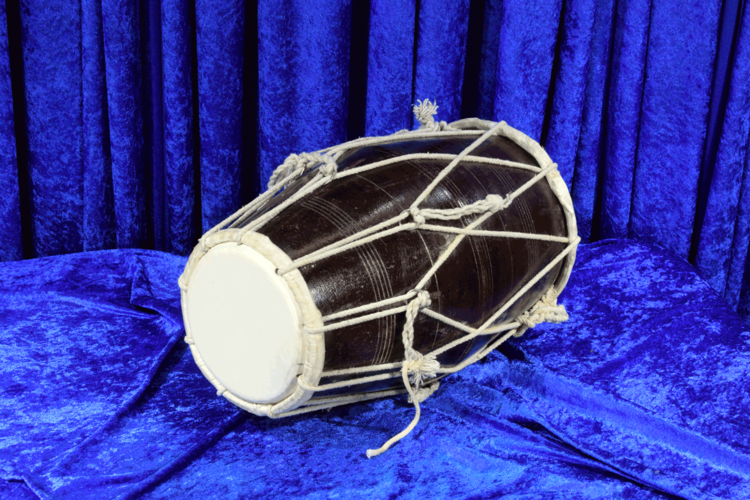
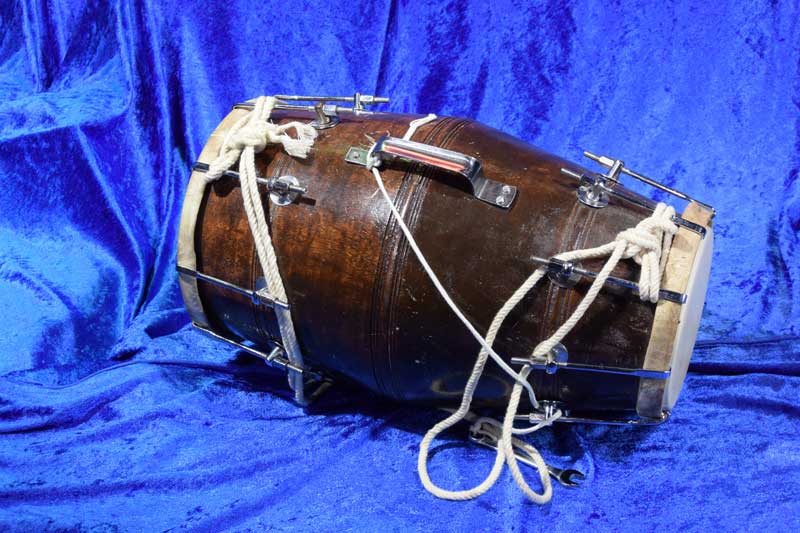
Dholak is a very popular folk drum of northern India. It is barrel shaped with a simple membrane on the right hand side; basically it is just a smaller version of the dhol. The left hand is also a single membrane with a special application on the inner surface. This application is a mixture of tar, clay and sand (dholak masala) which lowers the pitch and provides a well defined tone. There are two ways of tightening the dholak. Sometimes they are laced with rope, in which case, a series of metal rings are pulled to tighten the instrument. Sometimes metal turnbuckles are employed.
The position of the dholak in Indian music is complex. It is said that this instrument used to occupy a position of considerable prestige. Today it is merely relegated to filmi and folk music, as well as he allied styles of bhajan, geet, and qawwalli.
Photo Gallery
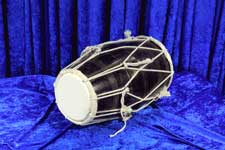
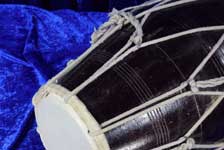
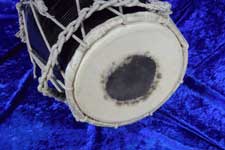
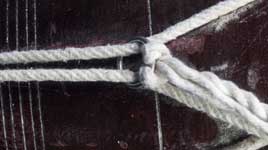
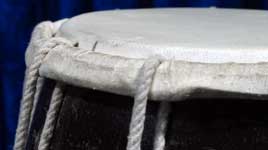
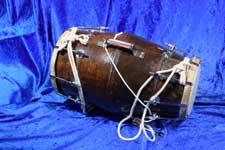

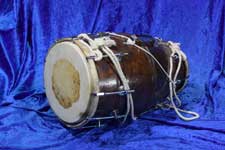
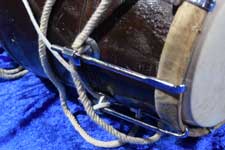
Selected Video
Other Sites of Interest
Folk Drums and Tribal Girls: Sounding the Himalayas in Indian Film
Drums of India: A Pictorial Selection
The "Dḩāk", Devi Amba's Hourglass Drum in Tribal Southern Rajasthan, India
The Role of the Phariya in Tribal Acculturation in a Central Indian Market
Bower: Drums Behind the Hill (Book Review)
New Wine from Medina: Aesthetics of popular qawwali lyrics
Experiencing Qawwali: Sound as Spiritual Power in Sufi India
A Multimodal Analysis of Qawwali
Mahfil-i-Sama/Qawwali: Celebrations and Contestations
Rethinking Qawwali: perspectives of Sufism, music, and devotion in north India
Sufi Music of India and Pakistan: Sound, Context, and Meaning in Qawwali
Folk Music of Pakistan: Socio-Cultural Influence of Qawwali
Bharatiya Sangeet Vadya (Review)
Catalogue of Indian Musical Instruments
Fractal dimension analysis of audio signals for Indian musical instrument recognition
Natural synthesis of North Indian musical instruments
Recognition of Indian Musical Instruments with Multi-Classifier Fusion
The Tagore collection of Indian musical instruments
Improvement of Audio Feature Extraction Techniques in Traditional Indian Musical Instrument
East Indians musical instruments
